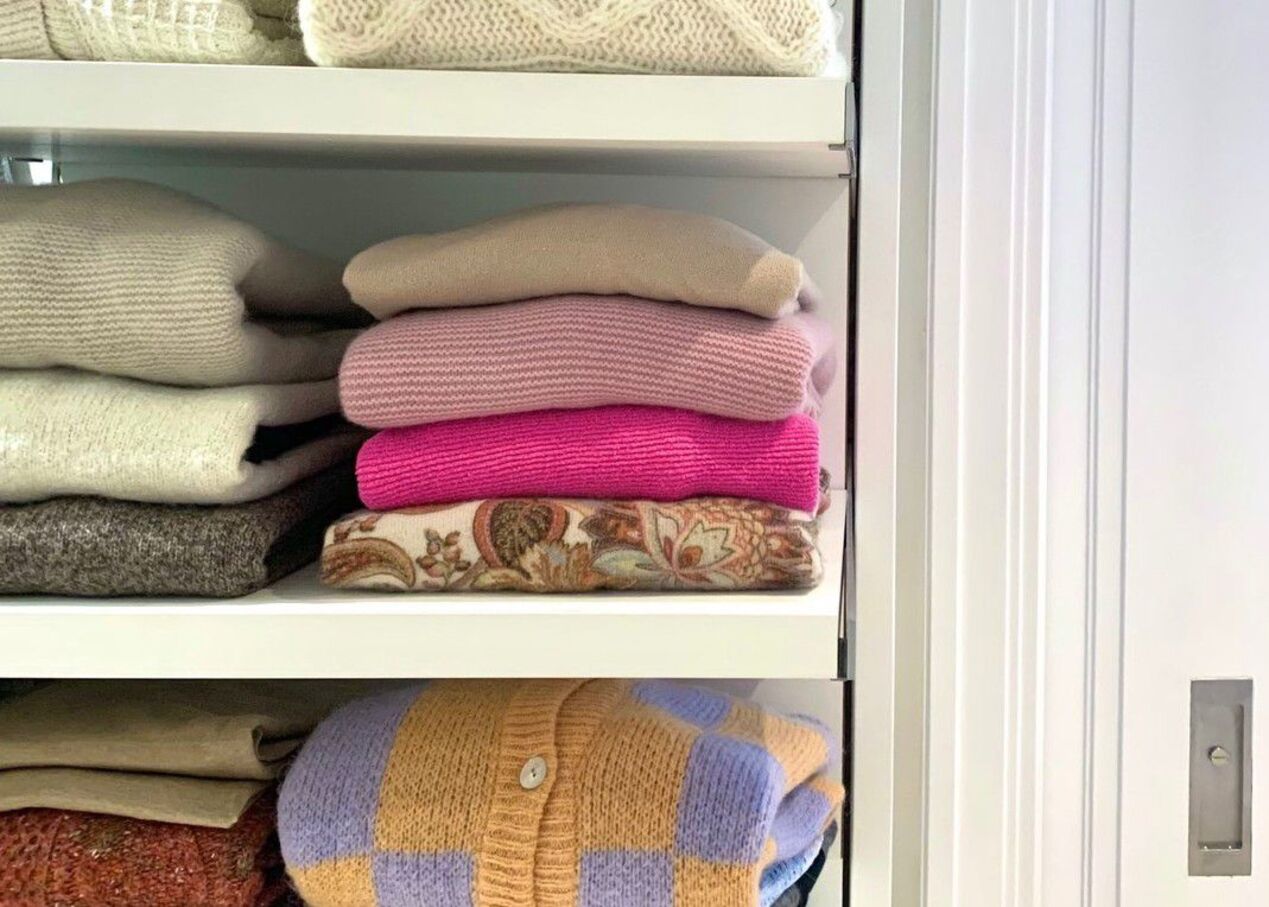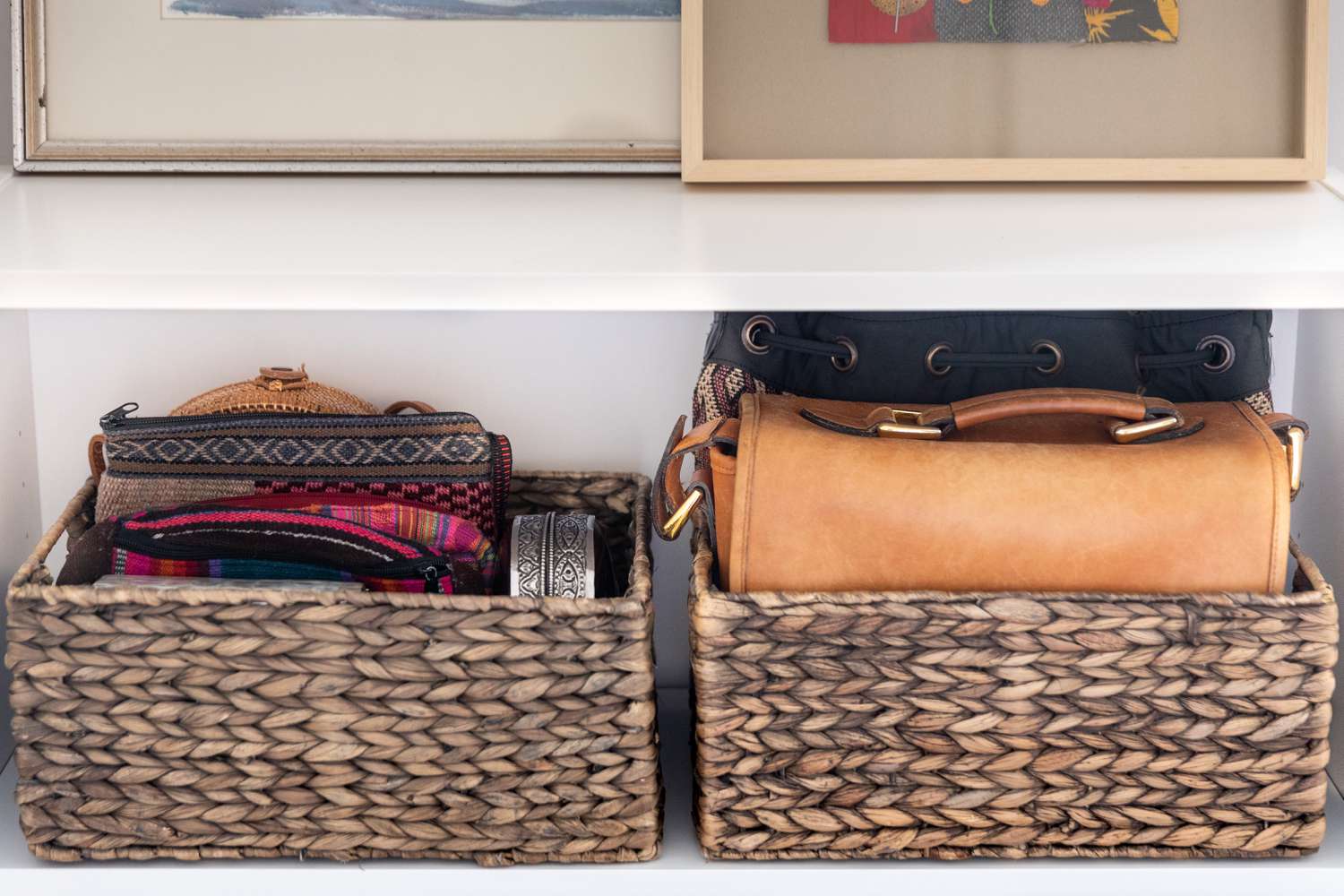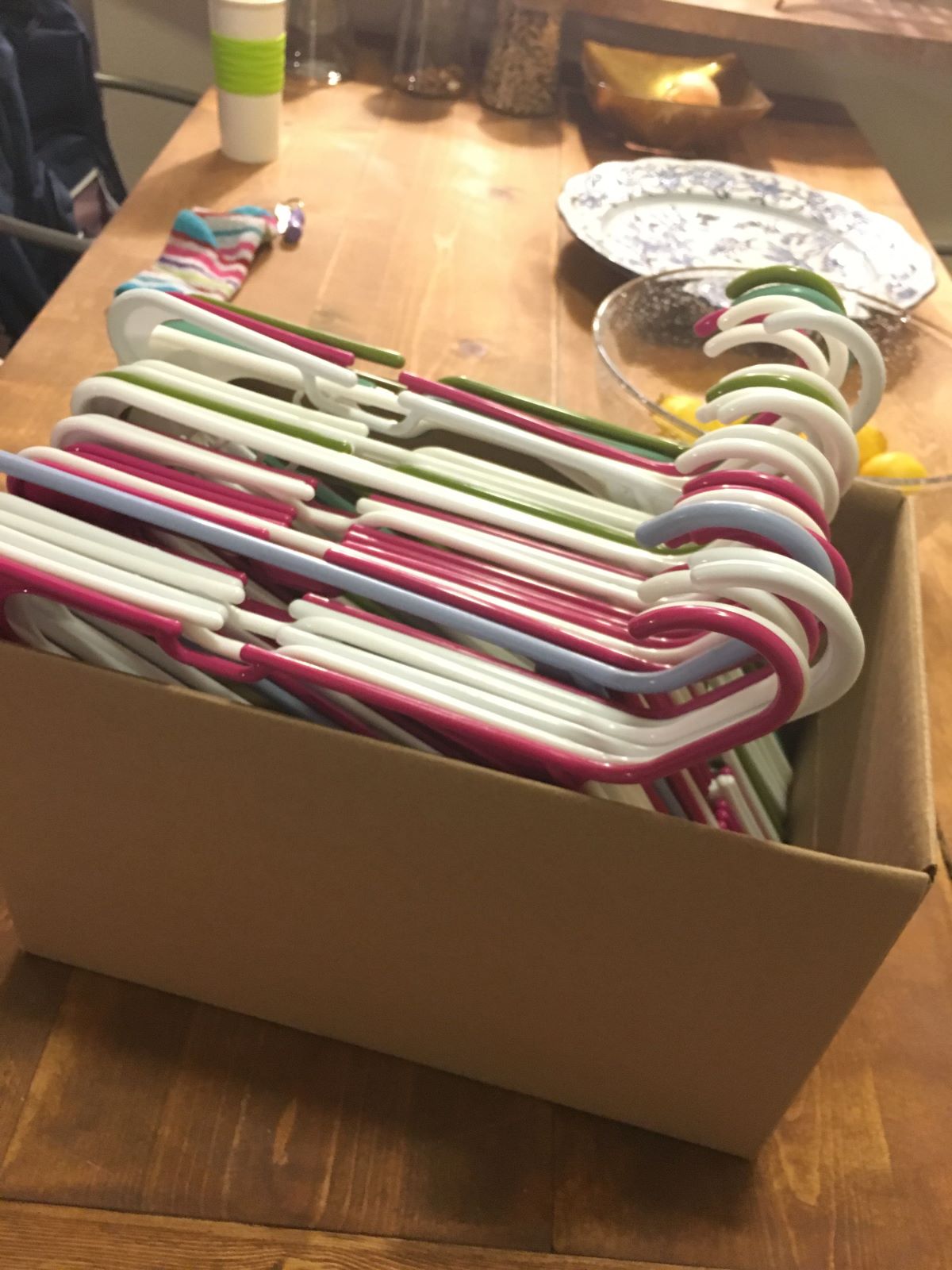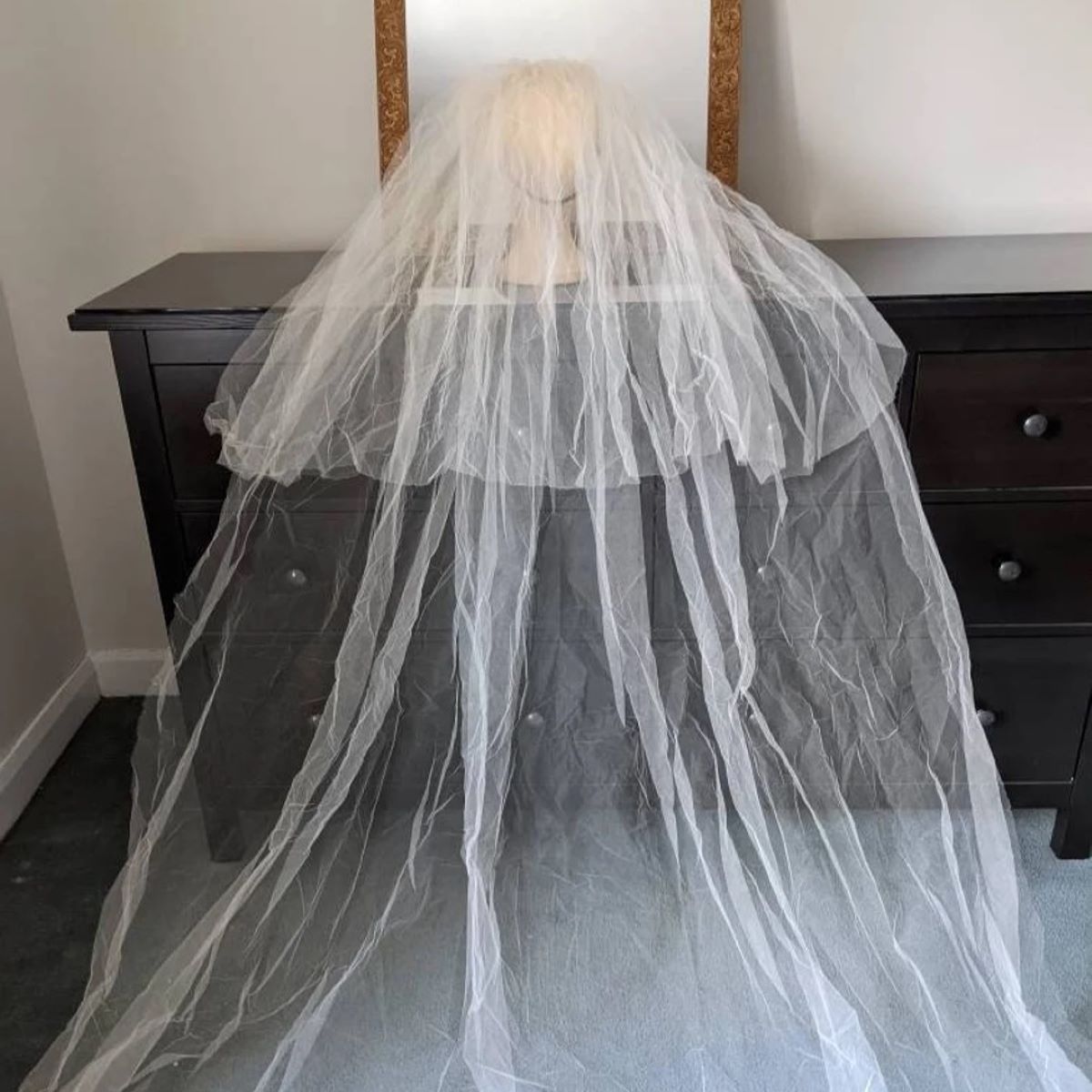

Articles
How To Store Woolen Clothes
Modified: February 28, 2024
Learn how to properly store your woolen articles to keep them fresh and free from damage. Find helpful tips and tricks for preserving your favorite woolen pieces.
(Many of the links in this article redirect to a specific reviewed product. Your purchase of these products through affiliate links helps to generate commission for Storables.com, at no extra cost. Learn more)
Introduction
When the cold weather arrives, it’s time to bring out your cozy woolen clothes. But what about the rest of the year when they are not in use? Storing woolen clothes properly is key to maintain their quality and ensure they are ready to wear when the chill sets in again. In this article, we will guide you on how to store woolen clothes effectively to keep them fresh, clean, and free from damage.
Wool is a natural fabric that requires extra care to preserve its softness, warmth, and shape. Improper storage can lead to issues like moth infestation, musty odors, and fabric distortion. By following the right techniques, you can protect your woolen garments and extend their lifespan.
Before we delve into the storage methods, it is important to note that woolen clothes should always be stored in a clean and dry condition. Make sure to clean them thoroughly before packing them away for the season. Now, let’s explore the step-by-step process of storing woolen clothes to keep them in pristine condition.
Key Takeaways:
- Properly storing woolen clothes is crucial for maintaining their quality and longevity. Choose a cool, dark, and dry storage location, clean garments thoroughly, and use breathable containers to protect against pests and moisture.
- Implement additional tips such as using natural moth repellents, avoiding wire hangers, and regularly checking stored clothes for damage. Proper storage is an investment in the longevity of your woolen garments, ensuring they remain fresh and ready for the colder months.
Choosing the Right Storage Location
The first step in storing woolen clothes is to select the appropriate storage location. Ideally, you want a place that is cool, dark, and dry. Avoid areas that are prone to humidity, such as basements or attics, as moisture can cause mold and mildew to develop on your garments. Instead, look for a closet or a well-ventilated room where the temperature and humidity levels are controlled.
If you are using a closet, make sure it is clean and free from any traces of moisture or pests. Consider using a dehumidifier or moisture-absorbing products such as silica packets to maintain a dry environment. Also, ensure that there is enough space to store your woolen clothes without overcrowding them. Avoid cramming too many items together, as this can lead to wrinkles and deformation.
If you don’t have enough closet space, you can use a storage container specifically designed for clothing. Look for containers made of breathable materials like fabric or canvas, as they allow airflow and prevent moisture buildup. Avoid using plastic bags or containers, as they can trap moisture and promote the growth of mold and mildew.
Additionally, consider the accessibility of the storage location. You want to be able to retrieve your woolen clothes easily when the colder months approach. Keep in mind that constant exposure to light can cause fading, so choose a location where your garments won’t be exposed to direct sunlight.
By selecting the right storage location, you can create an environment that minimizes the risk of damage to your woolen clothes and ensures they remain in excellent condition until next winter.
Cleaning and Preparing Woolen Clothes for Storage
Before you pack away your woolen clothes for storage, it’s crucial to clean them properly. Even if the garments appear to be clean, they may still harbor dirt, oils, or stains that can attract pests and cause fabric discoloration over time. Follow these steps to ensure your woolen clothes are fresh and ready for storage:
- Check the care instructions: Start by referring to the care labels on your woolen garments. Each piece may have specific cleaning instructions that you need to follow. If the label allows, wash the clothes using a gentle or wool-specific detergent.
- Spot clean stains: If you notice any stains or spills on your woolen clothes, address them before washing. Gently blot the stain with a clean cloth or sponge and a mild detergent. Avoid rubbing as it can damage the fabric. If the stain persists, consider taking the garment to a professional cleaner.
- Wash with care: If the care label allows machine washing, choose a gentle cycle with cold water. Use a detergent specifically formulated for wool or a mild, pH-neutral detergent. It’s best to wash woolen clothes individually or with similar colors to prevent color bleeding.
- Air dry: After washing, avoid using a dryer as it can shrink or distort woolen garments. Instead, lay them flat on a clean towel or a drying rack to air dry naturally. Gently reshape the garments while they are damp to maintain their original shape.
- Iron or steam: Once the clothes are completely dry, you can lightly iron them to remove any wrinkles. Use a low heat setting and place a thin cloth between the iron and the garment to protect the fabric. Alternatively, you can use a handheld steamer to remove wrinkles without direct contact.
- Protect with moth repellents: Wool is a favorite target for moths and other fabric-damaging pests. To safeguard your woolen clothes, place natural moth repellents, such as lavender sachets or cedar blocks, in the storage area. These substances help deter moths without leaving any harsh residue on your garments.
By thoroughly cleaning your woolen clothes and taking precautions against pests, you can ensure that your garments remain fresh and free from damage during storage.
Folding and Storing Woolen Clothes
Proper folding techniques are essential for storing woolen clothes to prevent creases, wrinkles, and stretching. Here’s a step-by-step guide to folding and storing your woolen garments:
- Start with a clean surface: Choose a clean, flat surface, such as a table or bed, to fold your woolen clothes. Make sure the surface is free from any debris or dirt that could transfer onto the garments.
- Fold sweaters carefully: Lay your woolen sweaters flat on the surface. Smooth out any wrinkles and fold them in half vertically, with the arms aligned. Then fold them once more horizontally, bringing the bottom hem up towards the collar. This method helps maintain the shape and prevents excessive stretching.
- Fold trousers and skirts: For trousers or skirts, fold them lengthwise first and then fold them in half or thirds horizontally. Be gentle to avoid leaving permanent creases and ensure the fabric is smooth.
- Fold dresses and coats: Lay dresses or coats flat and fold them in half vertically, matching the side seams. For longer coats, you may need to fold them in half once more horizontally. Smooth out any wrinkles and ensure the fabric lays flat.
- Separate delicate items: If you have any delicate or embellished woolen clothes, consider separating them from others by placing tissue paper or cotton sheets between the layers. This extra layer of protection can prevent any potential damage.
- Stack folded garments: Once your woolen clothes are properly folded, stack them neatly in your storage container or closet. Keep similar items together to make it easier to locate them when you need them next season.
- Avoid excessive compression: While it’s important to maximize space, avoid compressing your woolen clothes too tightly in storage containers. Overly squished garments can lose their shape and develop permanent creases. Allow them some room to breathe by leaving a little space between the folded items.
Remember, the key is to fold your woolen clothes gently and keep them in a position that minimizes unnecessary stress on the fabric, ensuring they won’t lose their shape or develop unsightly creases while in storage.
Store woolen clothes in a cool, dry place away from direct sunlight to prevent fading and damage. Use breathable storage bags or containers to protect them from moths and mildew. Avoid hanging heavy items to prevent stretching.
Using Storage Bags or Containers
In addition to properly folding your woolen clothes, using the right storage bags or containers can further protect them from dust, insects, and other potential damage. Here are some tips for using storage bags or containers:
- Choose breathable materials: Opt for storage bags or containers made from breathable materials like fabric or canvas. These materials allow air circulation and help prevent moisture buildup, which can lead to mold and mildew. Avoid using plastic bags or containers, as they can trap moisture and cause damage to your woolen clothes.
- Avoid excessive compression: When placing your folded woolen clothes in storage bags or containers, avoid compressing them too tightly. Overly compressed garments can lose their shape and develop permanent creases. Allow some space for the clothes to breathe and maintain their natural form.
- Label and organize: If you have multiple storage bags or containers, make sure to label them accordingly. This will help you easily identify specific items without having to search through all the bags. Organize your clothes by category or season to streamline the retrieval process when you need them.
- Consider vacuum-sealed bags: Vacuum-sealed bags can be a good option for saving space and protecting your woolen clothes from dust and pests. However, keep in mind that they may not be suitable for delicate or highly structured woolen garments, as the compression can cause wrinkles or damage the fabric.
- Store in a cool, dry place: Once your woolen clothes are packed in storage bags or containers, place them in the appropriate storage location as discussed earlier – a cool, dark, and dry area. Avoid areas that are prone to moisture, extreme temperatures, or direct sunlight, as these conditions can damage the fabric.
- Check periodically: While your woolen clothes are in storage, it’s a good idea to check on them periodically. Look out for signs of any pests or moisture buildup and address any issues promptly to prevent further damage.
By using the right storage bags or containers and taking proper precautions, you can ensure your woolen clothes stay protected and in excellent condition until you’re ready to wear them again.
Read also: 12 Unbelievable Woolen Dryer Balls For 2024
Additional Tips for Woolen Clothes Storage
Here are some additional tips to consider when storing your woolen clothes:
- Avoid wire hangers: When hanging woolen clothes, opt for padded or wooden hangers. Wire hangers can cause stretching or distortion of the fabric over time.
- Use mothballs cautiously: While mothballs are effective in deterring moths, they emit a strong odor and can leave residue on your clothes. If you choose to use mothballs, place them in a breathable pouch or container and keep them away from direct contact with your garments.
- Rotate your garments: To prevent excessive wear and maintain the quality of your woolen clothes, rotate them throughout the season. This allows each garment to rest and recover its shape before being worn again.
- Avoid hanging in plastic covers: Plastic garment covers can trap moisture and promote mildew growth. Instead of using plastic covers, opt for fabric covers that allow the garments to breathe.
- Consider cedar or lavender: Cedar and lavender are natural moth repellents. Consider using cedar blocks, chips, or lavender sachets in your storage areas to keep moths at bay. These natural options add a pleasant scent to your clothes as well.
- Keep accessories separate: If you have woolen accessories like hats, scarves, or gloves, store them separately in a designated container or drawer. This helps prevent tangling and keeps them easily accessible when you need them.
- Regularly brush your woolen clothes: A gentle brushing with a soft bristle brush can remove any surface dirt or lint from your woolen clothes. It helps to keep them fresh and maintain their appearance during storage.
- Follow garment-specific instructions: Different types of woolen clothes may have specific storage requirements. For example, suits or tailored wool garments may benefit from being stored in a breathable suit bag. Always refer to the care labels and follow any instructions provided by the manufacturer.
- Review your stored clothes before wearing: Before wearing your stored woolen clothes, take the time to inspect them for any signs of damage or pests. If you notice any issues, address them promptly to prevent further damage.
By implementing these additional tips, you can ensure that your woolen clothes remain in excellent condition during their time in storage and are ready to be enjoyed when the colder weather returns.
Conclusion
Properly storing your woolen clothes is essential to preserve their quality and ensure they are ready to wear when the cold weather comes around again. By following the techniques and tips outlined in this article, you can protect your woolen garments from damage, maintain their shape and freshness, and extend their lifespan.
Start by choosing the right storage location, ensuring it is cool, dark, dry, and free from moisture and pests. Clean your woolen clothes thoroughly before storage, following the care instructions on the garment labels. Proper folding techniques are crucial, as they prevent creases and maintain the fabric’s shape. Use breathable storage bags or containers made of fabric or canvas to protect your clothes from dust, insects, and moisture.
Label and organize your stored woolen clothes to make retrieval easier, and consider using natural moth repellents like cedar or lavender to deter pests. Avoid wire hangers and plastic covers, and periodically check your clothes for any signs of damage or pests during their time in storage.
By following these guidelines, you can ensure that your woolen clothes remain in excellent condition during their time in storage. When the colder months arrive again, you will be able to retrieve your clothes, fresh and ready to keep you warm and stylish.
Remember, proper storage is an investment in the longevity of your woolen garments, ensuring that you can enjoy them for years to come. So, take the time to store them correctly and maintain their quality, and they will reward you with cozy comfort and timeless style season after season.
Frequently Asked Questions about How To Store Woolen Clothes
Was this page helpful?
At Storables.com, we guarantee accurate and reliable information. Our content, validated by Expert Board Contributors, is crafted following stringent Editorial Policies. We're committed to providing you with well-researched, expert-backed insights for all your informational needs.















0 thoughts on “How To Store Woolen Clothes”